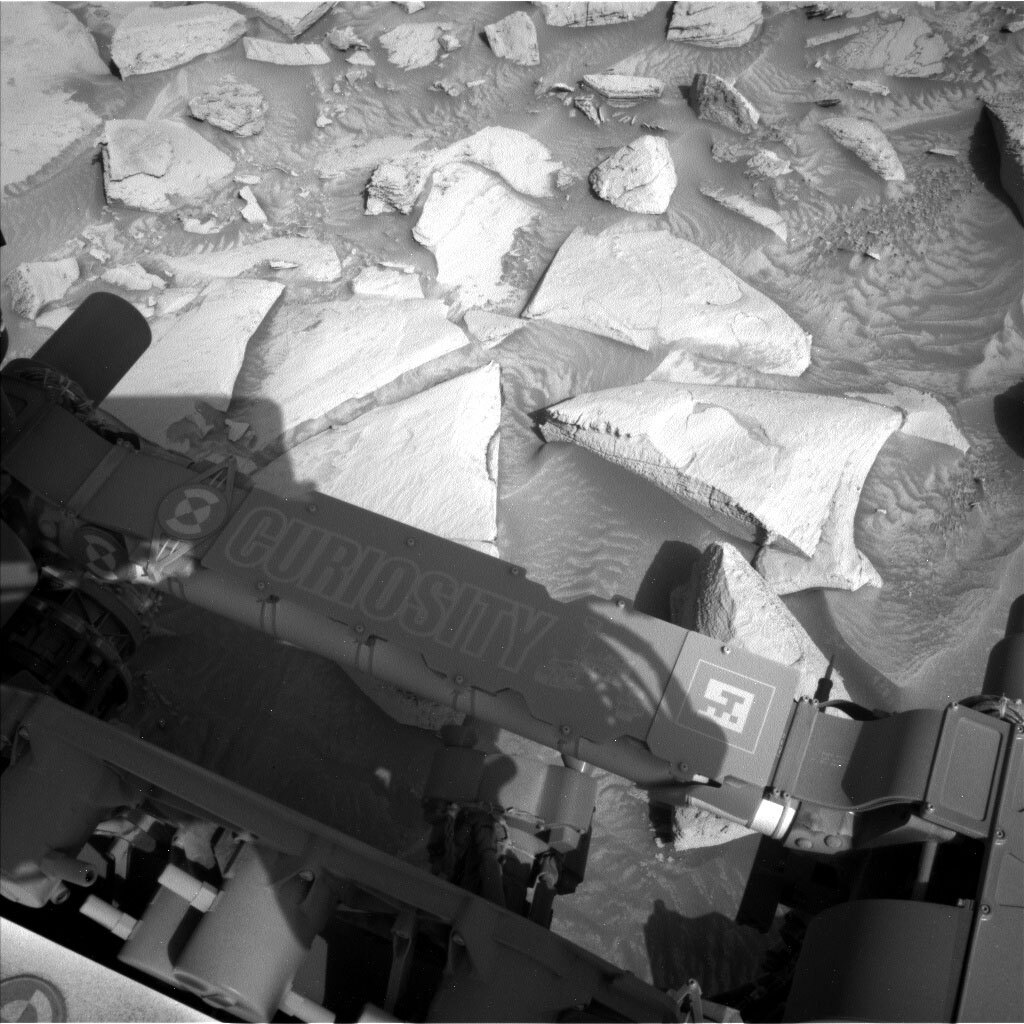3 min read

Earth planning date: Friday, February 2, 2024
Happy Groundhog Day, Earthlings! Punxsutawney Phil must’ve seen his shadow all the way to Mars, because right now it’s spring in Gale crater. Luckily, we didn’t have a Groundhog-Day-movie moment too; All of our plans from Wednesday completed successfully leaving us in a brand new location in Gale crater. Unluckily, we had intermittent Earth-based software issues that made us choose between planning contact science with the arm or driving to a new location for next week. The team ultimately decided to drive away so we could take full advantage of the rare, flat-ish terrain here allowing us to image all the rover wheels with MAHLI during the drive. My role today as Mastcam Uplink Lead was highly productive - we planned over 220 images to be taken this weekend! We also had a new science member join the Mastcam team today, so it was a fun and challenging day for us.
The first sol contains a standard midday remote science block with ChemCam LIBS, RMI, and Mastcam activities including a huge mosaic of the upper Gediz Vallis. The second sol contains more of the same, but we’re also testing what it looks like to take images with the Mastcam Left camera again since it’s been occluded by its own filter wheel. To take in-focus images with the occluded Mastcam Left (which looks like this as a full frame), we are sub framing our own CCD to only store data from the pixels on the left-hand side. If all goes well, we should just see smaller images coming back to Earth showing none of the occluded part.
On the third sol, we drive away and attempt to take a full look at the wheels with MAHLI, Navcam, and Mastcam Right. We do this every kilometer or so to keep track of wheel integrity. The rover will drive a small amount and take images a total of five times, until all sides of the wheels have been imaged. MARDI takes advantage of wheel imaging by taking a single MARDI image at each wheel imaging stop, for extra ground coverage. After the wheel imaging we’ll continue to our end-of-drive destination and take the post-drive imaging needed for Monday’s plan. It doesn’t sound like a lot when I type it out, and I intentionally left out some smaller activities in the plan, but believe me when I say everyone on the team was working hard today! I hope our rover isn’t a fan of Groundhog Day so it doesn’t have to be planned again.
Written by Natalie Moore, Mission Operations Specialist at Malin Space Science Systems







